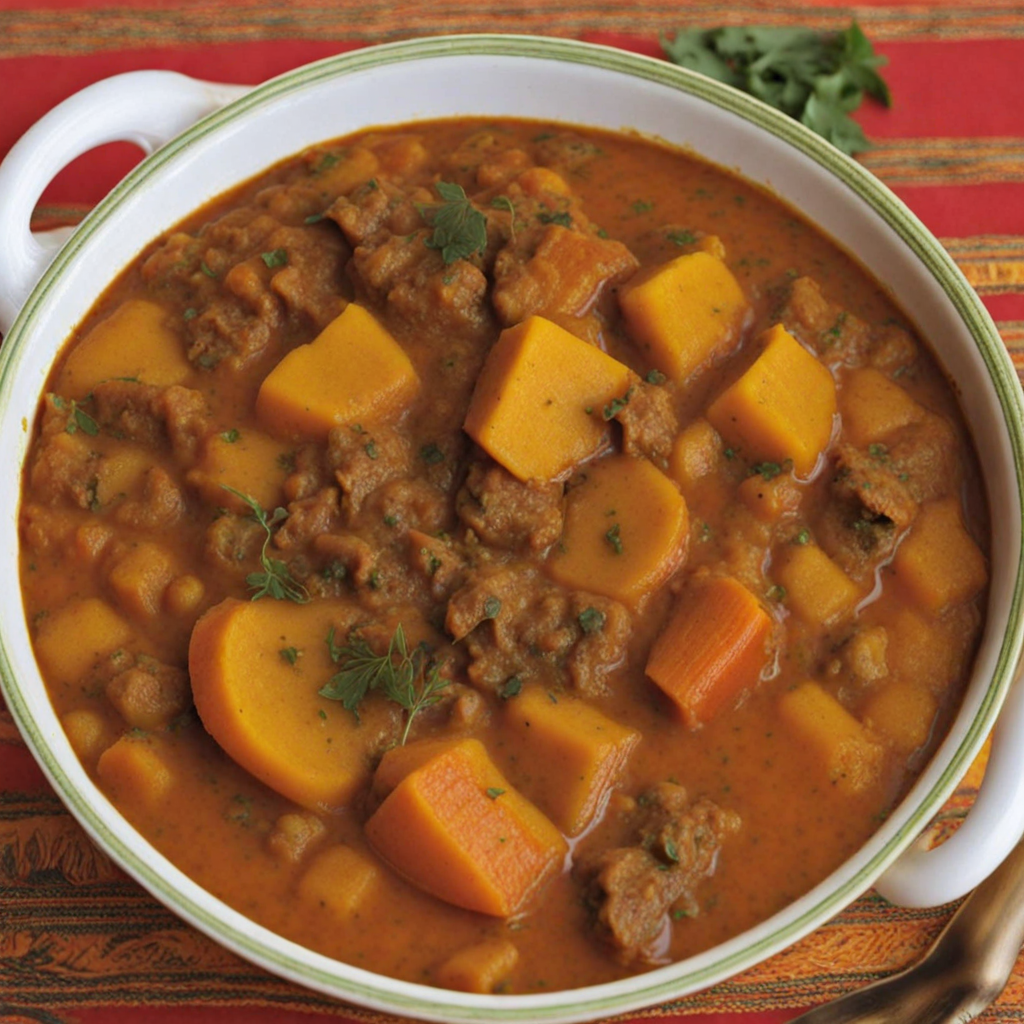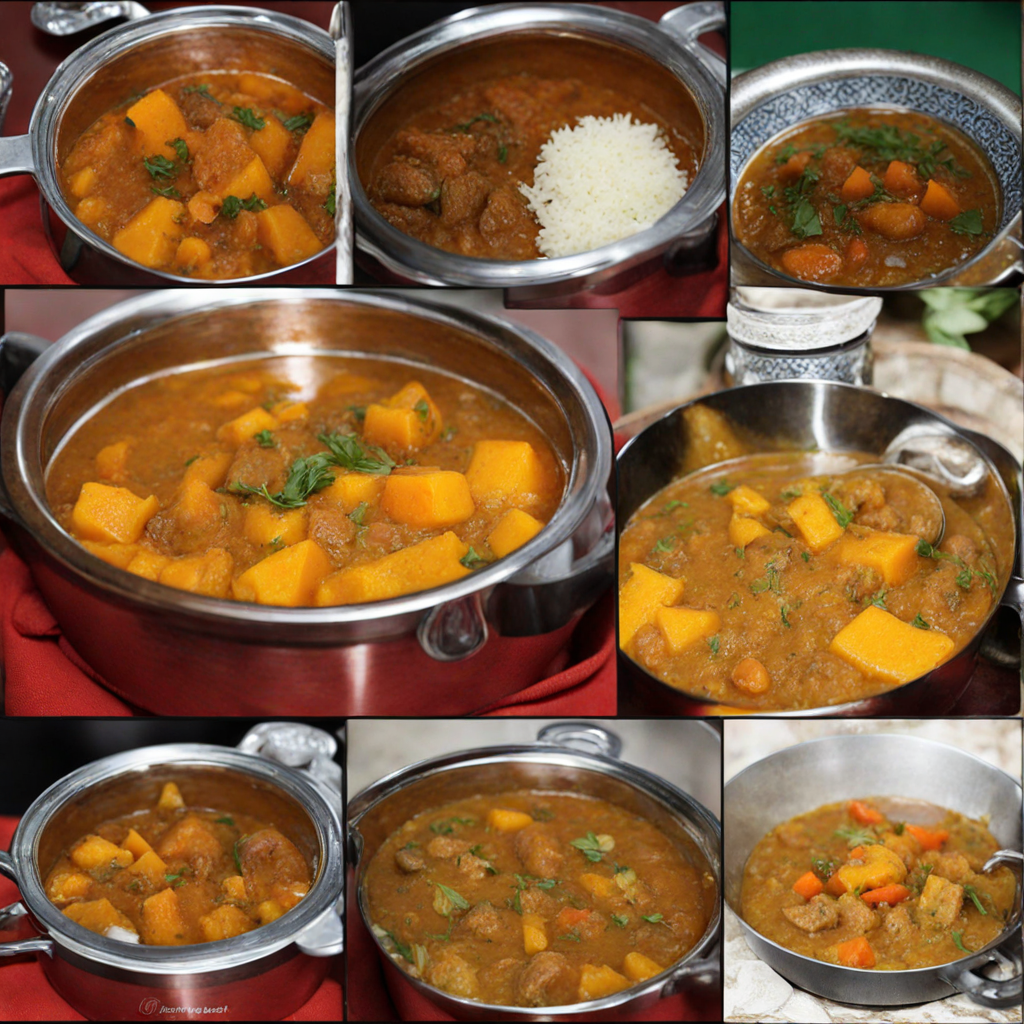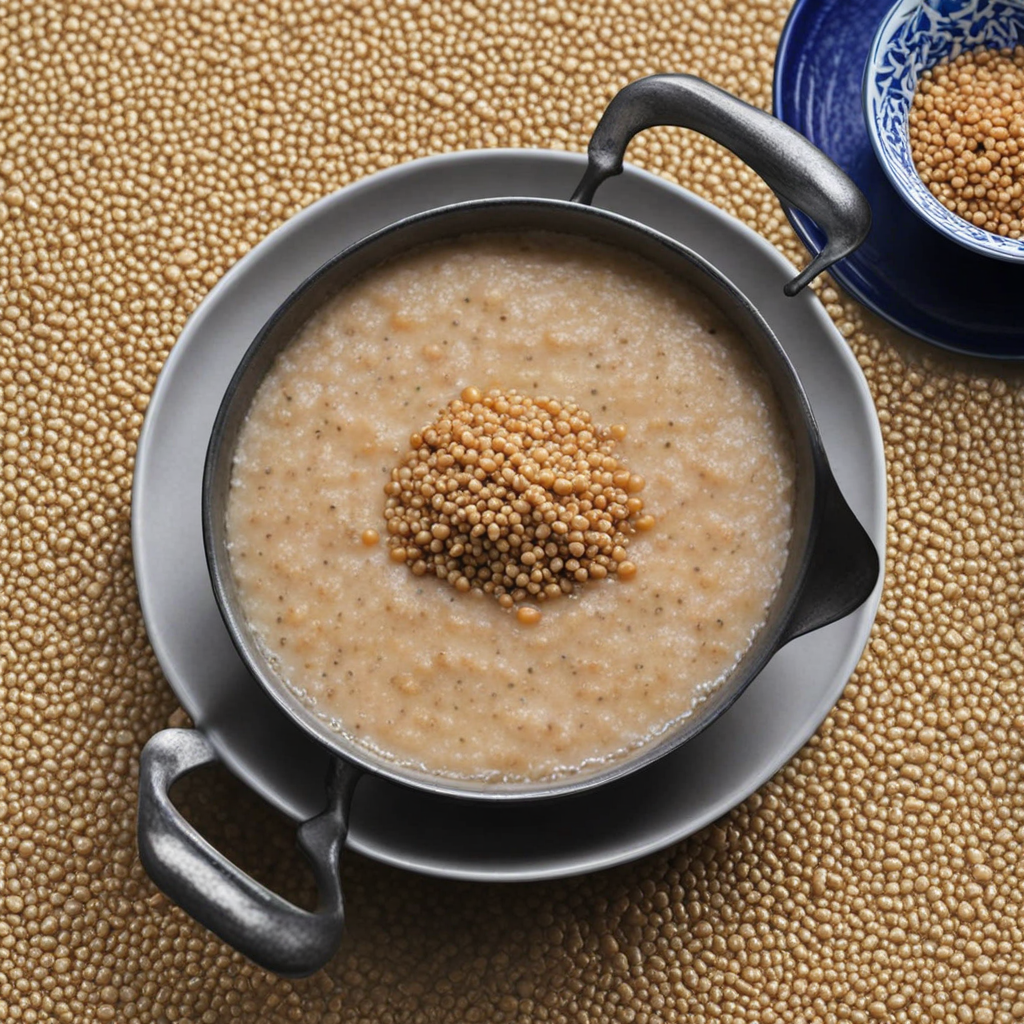Squash Stew
Toukoussou is a traditional dish originating from Niger, primarily enjoyed by the Tuareg and other Saharan peoples. This dish is a type of couscous, which is a staple in many North and West African cuisines, but Toukoussou holds a unique place due to its preparation methods and regional variations. Historically, it has been a significant culinary tradition, often prepared for communal gatherings, celebrations, and as a nourishing meal during the dry season when resources may be limited. This dish not only serves as a culinary delight but also embodies the cultural identity and social fabric of the communities that prepare it. The flavor profile of Toukoussou is characterized by its subtle yet rich taste. The couscous itself has a slightly nutty flavor, enhanced by the steaming process that infuses it with the aromas of the accompanying ingredients. Depending on the region and personal preferences, Toukoussou can be served with a variety of sauces and accompaniments, which may include meat (commonly lamb or chicken), vegetables, and spices. The use of spices such as cumin, coriander, and chili can elevate the dish, providing layers of warmth and complexity. The overall flavor is comforting and hearty, making it a beloved choice among those who enjoy traditional African fare. The preparation of Toukoussou is an art that requires skill and patience. The base of the dish is made from coarsely ground durum wheat, which is moistened and rolled into small granules. These granules
How It Became This Dish
The History of Toukoussou: A Culinary Jewel of Niger Toukoussou is a traditional dish from Niger that encapsulates the rich culinary heritage and cultural significance of the region. With its origins deeply rooted in the diverse ethnic fabric of Niger, Toukoussou serves not only as a staple food but also as a symbol of communal identity and resilience. This essay delves into the origins, cultural importance, and evolution of Toukoussou over time. #### Origins The roots of Toukoussou can be traced back to the ancient civilizations that inhabited the Sahel region, where Niger is located. The Sahel, a transitional zone between the Sahara Desert to the north and the savannas of West Africa to the south, has long been a crossroads of trade, culture, and agriculture. The diverse ethnic groups in Niger—such as the Hausa, Zarma, and Tuareg—have contributed to the culinary landscape, each bringing their own ingredients, techniques, and traditions. Toukoussou itself is primarily made from millet, a drought-resistant grain that has been cultivated in the region for thousands of years. Millet is not only well-suited to the arid climate but also holds nutritional value, making it an essential part of the local diet. The process of preparing Toukoussou involves fermenting millet to create a unique flavor and texture, a technique that reflects the ingenuity of Nigerien cooks in utilizing local resources. #### Cultural Significance Beyond its nutritional value, Toukoussou holds significant cultural importance in Niger. It is often associated with communal gatherings and celebrations, such as weddings, festivals, and religious ceremonies. In many communities, the preparation of Toukoussou is a communal affair, with family and friends coming together to participate in the process. This not only strengthens social bonds but also serves as a means of passing down culinary traditions from one generation to the next. The dish is typically served with a variety of accompaniments, including sauces made from vegetables, meats, or legumes, which enhances its flavor profile and nutritional content. The sharing of Toukoussou at communal meals symbolizes unity and hospitality, reflecting the Nigerien values of cooperation and kinship. Toukoussou also represents the resilience of Niger's people in the face of environmental challenges. The Sahel region is prone to droughts and food insecurity, and traditional dishes like Toukoussou highlight the resourcefulness of local communities in utilizing available ingredients. By relying on millet and other locally sourced foods, Nigeriens have managed to maintain their culinary traditions while adapting to changing circumstances. #### Development Over Time Over the years, Toukoussou has evolved, influenced by globalization and changing dietary preferences. In the past, the preparation of Toukoussou was a labor-intensive process. The millet would be soaked, ground, and fermented, taking several days to achieve the desired taste and consistency. However, as modern conveniences have made their way into rural areas, some aspects of the preparation have been simplified. For instance, the introduction of milling machines has allowed for quicker grinding, making it more accessible for families. Despite these changes, many Nigeriens remain committed to traditional methods of preparing Toukoussou, valuing the depth of flavor and texture that come from time-honored techniques. The dish continues to be a staple in homes across Niger, signifying a blend of tradition and modernity. In contemporary times, Toukoussou has gained recognition beyond Niger’s borders. As the global interest in ethnic and traditional cuisines has surged, Toukoussou has begun to appear in international culinary circles. Chefs and food enthusiasts are increasingly appreciating the dish for its unique flavors and cultural narrative, leading to its inclusion in African-themed restaurants and culinary festivals around the world. This newfound attention has not only elevated the status of Toukoussou on the global stage but has also sparked a renewed interest among Nigeriens in their culinary heritage. Many are now seeking ways to preserve traditional recipes and cooking methods, ensuring that the knowledge of Toukoussou and its cultural significance is passed down through generations. #### Toukoussou in Contemporary Society Today, Toukoussou is more than just a dish; it is a representation of Niger’s identity and heritage. It serves as a reminder of the resilience of the Nigerien people, who have adapted their culinary practices in response to environmental challenges while maintaining their rich traditions. With the rise of food sovereignty movements, there is a growing emphasis on the importance of preserving local food systems, and Toukoussou stands as a testament to the value of indigenous knowledge and practices. Moreover, the dish is increasingly being celebrated for its health benefits. Millet, the primary ingredient in Toukoussou, is rich in vitamins, minerals, and dietary fiber, making it a nutritious choice in an age where there is a growing awareness of the importance of healthy eating. As people become more conscious of their food choices, Toukoussou is positioned well within the global discourse on nutrition and sustainability. #### Conclusion The history of Toukoussou is a rich tapestry woven from the threads of Niger’s cultural heritage, agricultural practices, and communal values. From its ancient origins to its contemporary significance, Toukoussou embodies the resilience and creativity of the Nigerien people. As this dish continues to evolve, it remains a cherished symbol of identity, unity, and nourishment, reminding us of the profound connection between food and culture. As we move towards a future that increasingly values sustainability and local traditions, Toukoussou stands as a shining example of how food can transcend boundaries and foster a sense of belonging in an ever-changing world.
You may like
Discover local flavors from Niger







